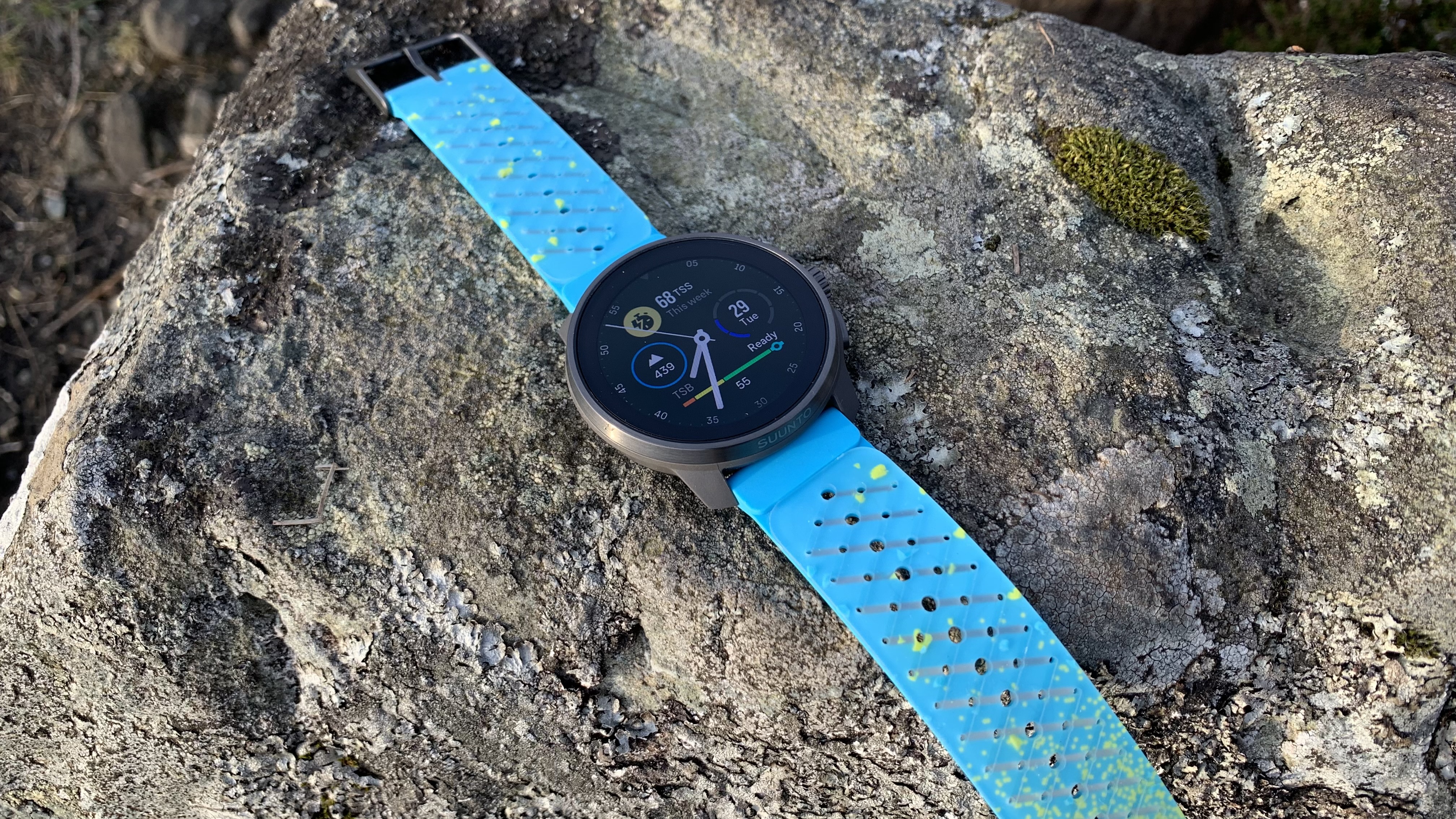Advnture Verdict
The Suunto Race S takes everything that's good about the Race and puts it in a smaller package, so you get the same tactical training tools, proper maps and excellent battery life in a lighter, more compact delivery. Ideal for tech-obsessed, serious athletes who want to pore over their data and aren't worried about making and receiving calls, this watch is extremely well-priced, especially when you consider it has a bright, AMOLED screen. It's not perfect, and the interface takes a little practice, but if you're seeking a high-quality training watch to rival Garmin, this one is worth a second look.
Pros
- +
Extremely accurate GPS
- +
Excellent battery life
- +
Proper offline maps
- +
Great training insights
- +
Super clear and bright display (easy to see in all conditions)
- +
High-quality build
- +
Responsive touchscreen
- +
Comfortable strap with innovative clip
- +
Reasonably priced (especially with AMOLED display)
Cons
- -
Takes a little while to get to grips with interface and maps
- -
Lacks proper flashlight
- -
High profile design not the best for sleeping
- -
Crown button a little fiddly
You can trust Advnture
The Suunto Race S: first impressions
The Suunto Race S takes everything that makes the Suunto Race great and packs it down to a smaller size. This technical GPS watch delivers the same bright AMOLED display, tactical training tools including proper maps and brilliant battery life as its larger predecessor, but makes it more versatile and comfortable to wear for those with smaller wrists.
For this review, I tested out the Suunto S Titanium Courtney edition, designed by the Finnish brand with ultra runner Courtney Dauwalter. It comes with a special glow-in-the-dark silicone strap in energetic turquoise and yellow, which embodies Dauwalter's upbeat spirit, but is also available with a stainless steel bezel in more subtle colorways.
With a 1.77in (45mm) case and a fairly high profile design, it's not exactly tiny, but it means there's a lighter and smaller option out there for those who want the benefits of the Race with less weight. However, the heart rate monitor is more prominent than many I've seen, which does make it a little annoying to wear with long sleeves. It's got a silicone strap that's comfortable against the skin and secures with a really handy clip that I'd like to see more brands utilize (if Suunto hasn't patented the idea).
The Race S is operated with three buttons: a digital crown (which is a little fiddly) that takes you into the Control Panel with a click (where you'll find quick access to functions like alarm clock and flight mode), a Back button and a Start/Stop button that toggles you right into the different sports modes from the home screen.
You can also control it via the touchscreen, swiping right to left to access the Control Panel, and down to get right into sports modes. If you swipe up, you'll arrive in what Suunto calls widgets, which is where you can find data like heart rate monitoring, sleep tracking, and weather forecasts, plus a shortcut to the Control Panel. The result is a slightly confusing interface where it feels like you keep ending up in the same place no matter what you're doing, though with the recent release of the Suunto Run, the brand says it's simplified things.
On the features front, the Race S is packed with all the cutting-edge training tools you'd expect, including super accurate heart rate monitoring and GPS, a pulse oximeter, barometric altimeter, sleep tracking, HRV and recovery predictions. The homescreen displays your Training Stress Score at all times, which weighs the stress the past week's workouts have placed on your body, and your Training Stress Balance, which measures your current form, based on both chronic (long terms) and acute (recent) training loads.
• List price: $349 / £325
• Case sizes: 1.77in / 45mm
• Display: AMOLED
• Weight: 1.76oz / 50g
• Battery life: 30 hours in GPS mode / up to 11 days with regular use
• Water resistance: 164ft / 50m
• Materials: Stainless steel or titanium bezel, Gorilla glass lens, fiber-reinforced polymer case, Sillicone strap
• Best use: Trail running, hiking, swimming, cycling
For the real downlow on your training status it's best to use the Suunto app, where you'll find your recent workouts on the home page, then your training calendar, metrics and maps on other tabs. Again, it's slightly less intuitive than it sounds, certainly at first.
All the latest inspiration, tips and guides to help you plan your next Advnture!
The Race S has proper maps, which is an excellent feature for anyone whose adventures take them off piste, but to access them, you first need to download an area to your phone – this could be an entire country or a smaller region. Once you've done this, you'll be able to easily send GPX files to your watch to follow, but without it, you'll only have line and pointer navigation.
Once you get out on the trail, the GPS is truly pristine, and if you're running, there are all kinds of AI training tools to help you with pace and heart rate zones. When you get home, one of the most glorious things about the Suunto app is that you'll be able to watch a digital flyover of your route on the 3D topo map.
With up to 30 hours of battery life in GPS mode, you can expect this watch to hold up during longer adventures, and it will last up to 11 days if you're using it in GPS mode for just an hour or two each day. Its excellent battery life is no doubt bolstered by the fact that this model doesn't have all the smart watch features that you'll find on something like the Garmin Fenix 8. You can read messages and receive call alerts, and even control music playback, but this is a training watch and not an extension of your smartphone.
It's got 95 different sports modes, including water sports, and while it's not a dive watch, it is waterproof and we found the heart rate monitoring in the water during pool swims to be much more accurate than the Coros Pace 3.
For nocturnal adventures (or just rummaging around looking for your socks for a pre-dawn run without waking your partner), it does claim to have a flashlight, but it's really just a bright white screen which does provide a little illumination, but not enough to leave your headlamp at home.
Like every GPS watch on the planet, Suunto wants you to wear it night and day for comprehensive metrics, but we found it a bit bulky to wear in bed. Making matters worse, a glow-in-the-dark strap really doesn't induce REM sleep, and the green light on the heart rate monitor tends to light up throughout the night, so I ended up leaving it in another room after the first three nights.
It isn't a perfect watch, but techy runners who take their training seriously will love it, and given all it has to offer, I think $349 is pretty reasonable (though it's $449 if you want the titanium bezel).
Suunto Race S: in the field
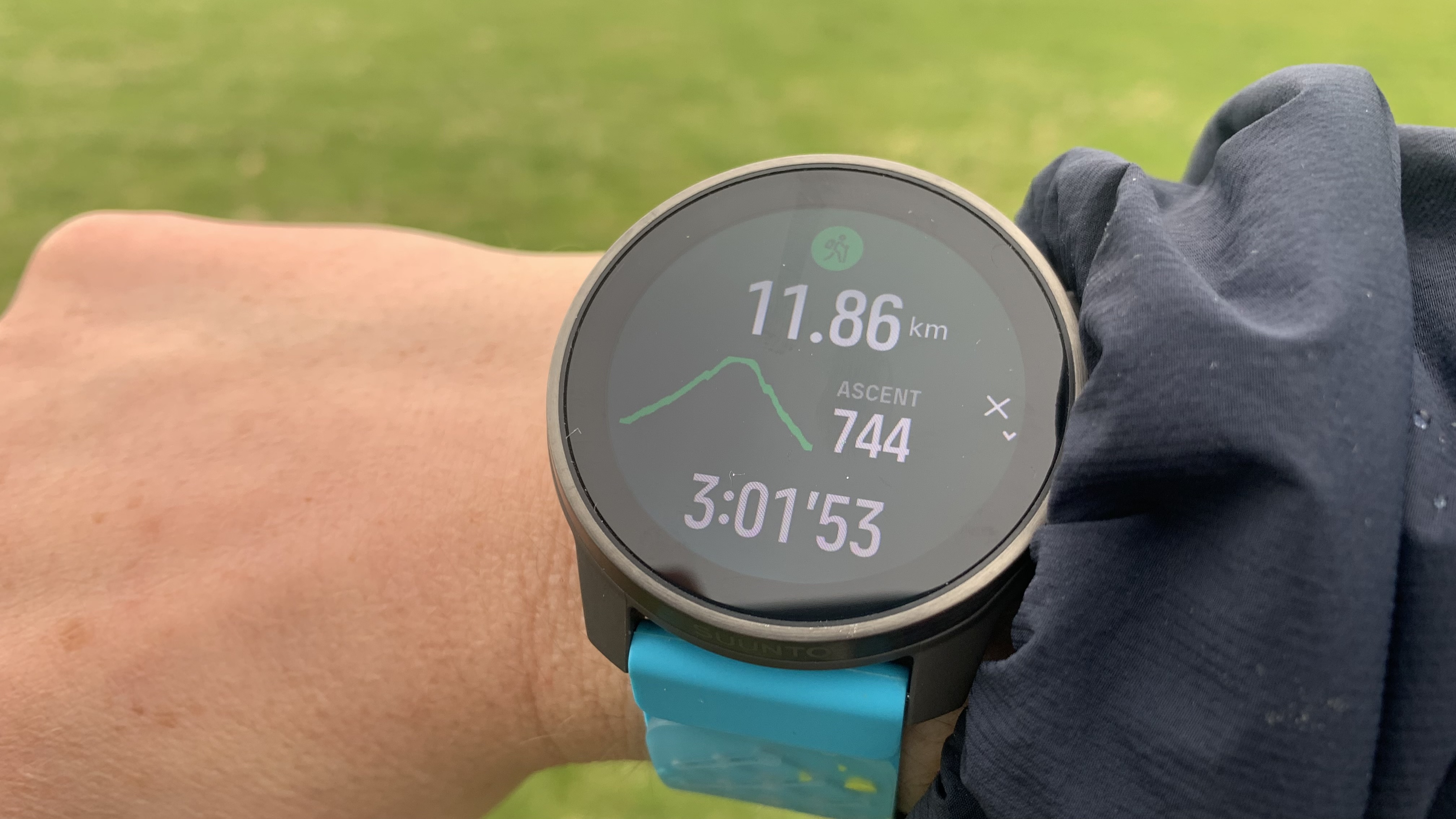
I've been testing the Suunto Race S for the past three weeks, and during that time I've used it for six hikes (including an adventure up Ben Nevis in an exoskeleton), four trail runs, a few gentle walks, a pool swim and eight yoga classes to get a feel for how it performs across multiple activities.
I've been wearing it on my right wrist and my Coros Pace 3 on my left wrist to see how the two compare in terms of metrics.
Here’s how it performed:
Design
I tested the Courtney edition of this watch, which has a fabulous-looking silicone strap and high-quality titanium bezel. It looks great right out of the box, and I found the strap comfortable against my skin, though I was surprised by how big it is for a small edition. Securing it is helped by a unique fastening system, where you insert a pin into a hole, which I think is genius, and I'd like to see on more watches.
I love the look of the glow-in-the-dark strap, but I found this proved a problem when I was trying to wear the watch at night for HRV tracking, since it kept me awake. I can see why a glow-in-the-dark band is great when you're running the length of Gran Canaria overnight in a storm, but it's a bit of a design flaw if you want to wear your watch 24/7. Luckily for me, I really don't, and after the requisite three nights to ensure HRV tracking worked, I left it in the hall while I slept.
The Race S looks like most watches I've tested, with three buttons on the right side of the case. However, I never quite got the hang of what all the buttons do. Usually, once I've worn a watch for a few days (or hours), it becomes instinctive, but to this day, I basically have to try every button on this model before I get what I'm looking for.
Also, I'm not sure why, but I found the digital crown a little fiddly at times. It just seems to be placed in the wrong location for easy operation.
So in short, the watch looks great and is really high quality, but it could use some refinement.
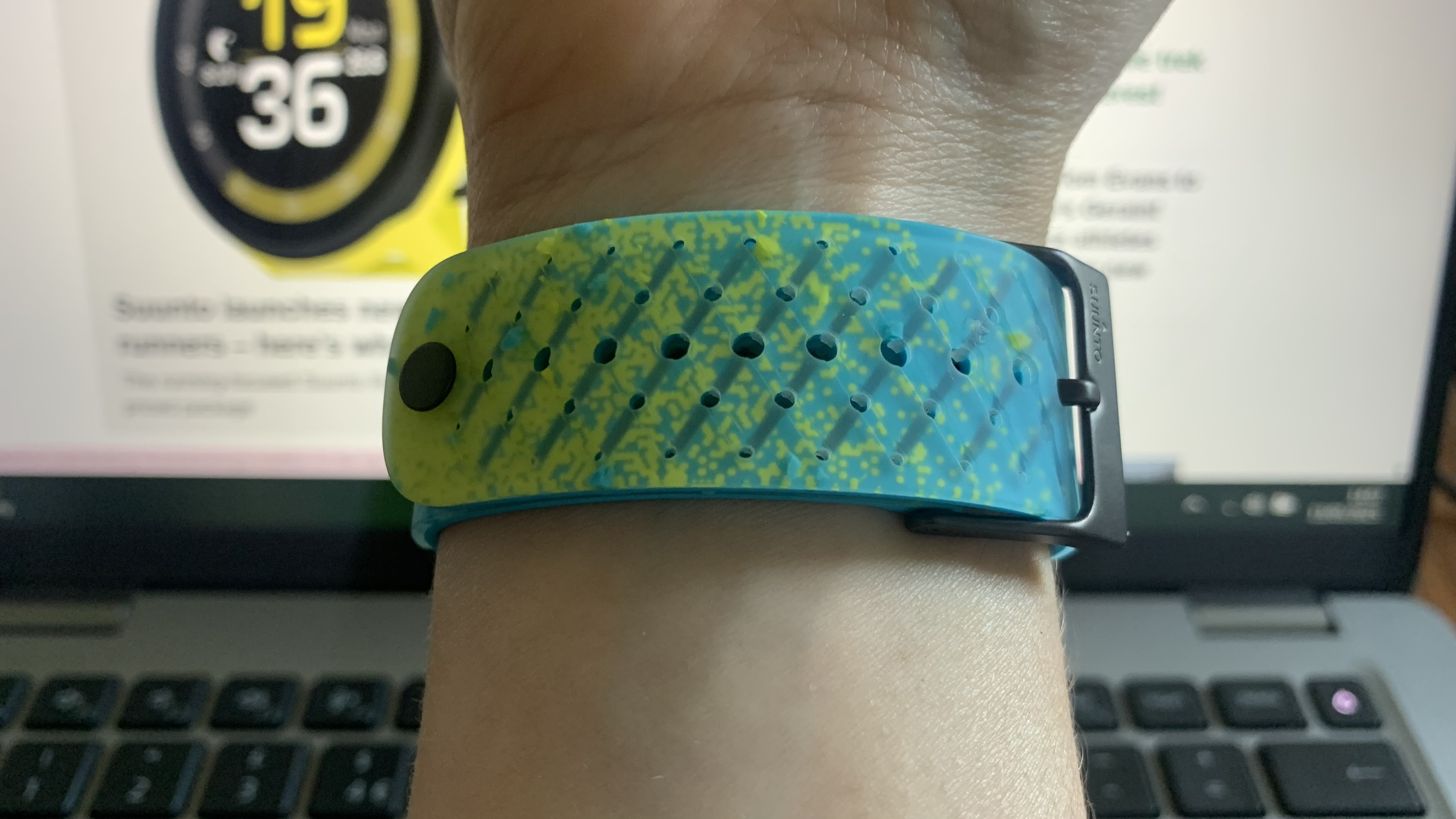
Features
The Suunto Race S is extremely well-featured for athletes, and has limited smartwatch capabilities; I think this is an intentional decision on the part of the brand, to keep users focused on training.
For training, it's got all the features I want and expect from a top-tier training watch these days – measuring metrics such as heart rate, HRV, sleep, and blood oxygen – and I tested them all out during and after my adventures. Compared to other watches, I found the heart rate tracking to be extremely precise and especially so during pool swimming, where my Coros Pace 3 seems to consistently think I'm barely exerting myself but my body tells me differently.
Suunto takes all of your data and gives you a snapshot of your performance on the home screen of the app, and then there are practically endless opportunities to dive deeper. In general, I found it interesting, if a little unintuitive and confusing. There are quite a few terms like CTL and ATL that I had to Google to find out what they meant (Chronic Training Load and Acute Training Load). I found a Reddit thread discussing these very questions, so I'm guessing I'm not the only one.
In the app, there's the option to compare certain metrics – such as heart rate against altitude or speed against temperature – which is not only fascinating, but could be enormously useful if you're training for a race.
On the top left of the home screen, the Race S provides your training status, which it calls Progress; something I found fascinating was that, no matter how much I trained, it always said I was losing fitness. I don't know if this was a quirk with the watch I was testing, but after hiking and running nearly 55 miles in three weeks, this just seems highly unlikely. Do they assume that everyone wearing the watch is Courtney Dauwalter? The best answer I can come up with is that, whereas my Coros watch might say I'm 'performance ready' after a few days of rest or low activity, Suunto thinks I'm losing fitness. I can see how this could be discouraging for certain athletes, so I'd love to see Suunto rethink this and come up with something at the very least more neutral. Maintaining, perhaps?
The feature I was most excited about was the mapping. The Suunto Race S has proper maps, although I had several false starts activating them. I first wore the watch on a two-day hiking trip in Glencoe, and I wrongly assumed I'd just be able to access maps like I could on the Garmin Fenix 8. I didn't have routes planned, and when I started walking I was surprised to see it was just line and pointer navigation.
Assuming I needed to send specific GPX files to my watch in order to benefit from topo maps, when I went on another two-day hiking trip, I made sure to download the routes I planned and send them to my watch (this was all straightforward). When I got going, I again saw that it was just line and pointer.
Finally, I did my research and realized that in order to use proper maps on the Race S, I needed to download the entire map of Scotland to my Suunto app. I started this process before my next hike, but realized it was going to take a long time and had to pull the plug. I returned to the project when I got home, which took nearly an hour, and finally, on my fourth attempt, I was able to access proper maps on my Suunto.
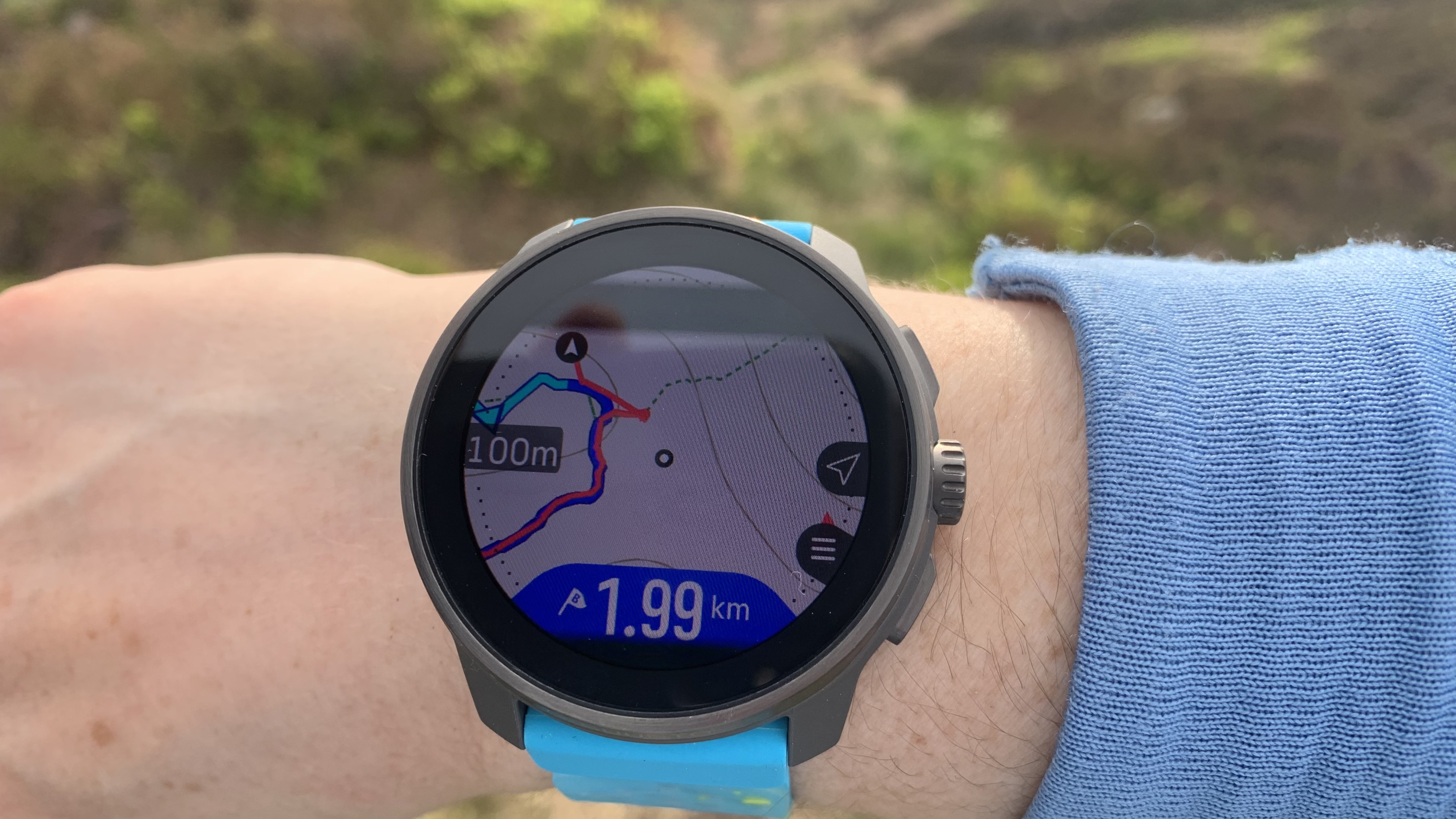
The maps feature works brilliantly once you get it on your watch, and my favorite part is that after a hike, you can watch a 3D video showing your route. I recently wore the watch on a hike up a mountain called Ben Venue. I took a less-used path that I'd never hiked before, seeing no one at all along the way, and thanks to low-lying cloud and drizzle, I couldn't see a whole lot. So it was brilliant to get home and be able to review what I'd done.
I really like the in-app maps, where I can filter routes in my area by surface (paved, smooth unpaved, rough unpaved) and apply heatmaps to find new routes in my area.
The flashlight isn't an actual flashlight, but instead a white screen which I only really find helpful for finding my yoga clothes at 6am without waking my boyfriend. I understand that a proper flashlight (like you'll find on some of the best Garmin watches) must be a battery drain, but I think it's appropriate for an adventure-ready watch such as this.
The Suunto Race S does allow you to control music (but not download it) if you like to run with tunes, but since I prefer the sound of the birds this isn't something I spent much time on.
Finally, as I mentioned, this watch doesn't have a huge amount of smartwatch features, beyond the ability to receive messages and call alerts. Personally, I like this. It means I don't have to pick up my phone as often and I'm not really looking to be more connected.
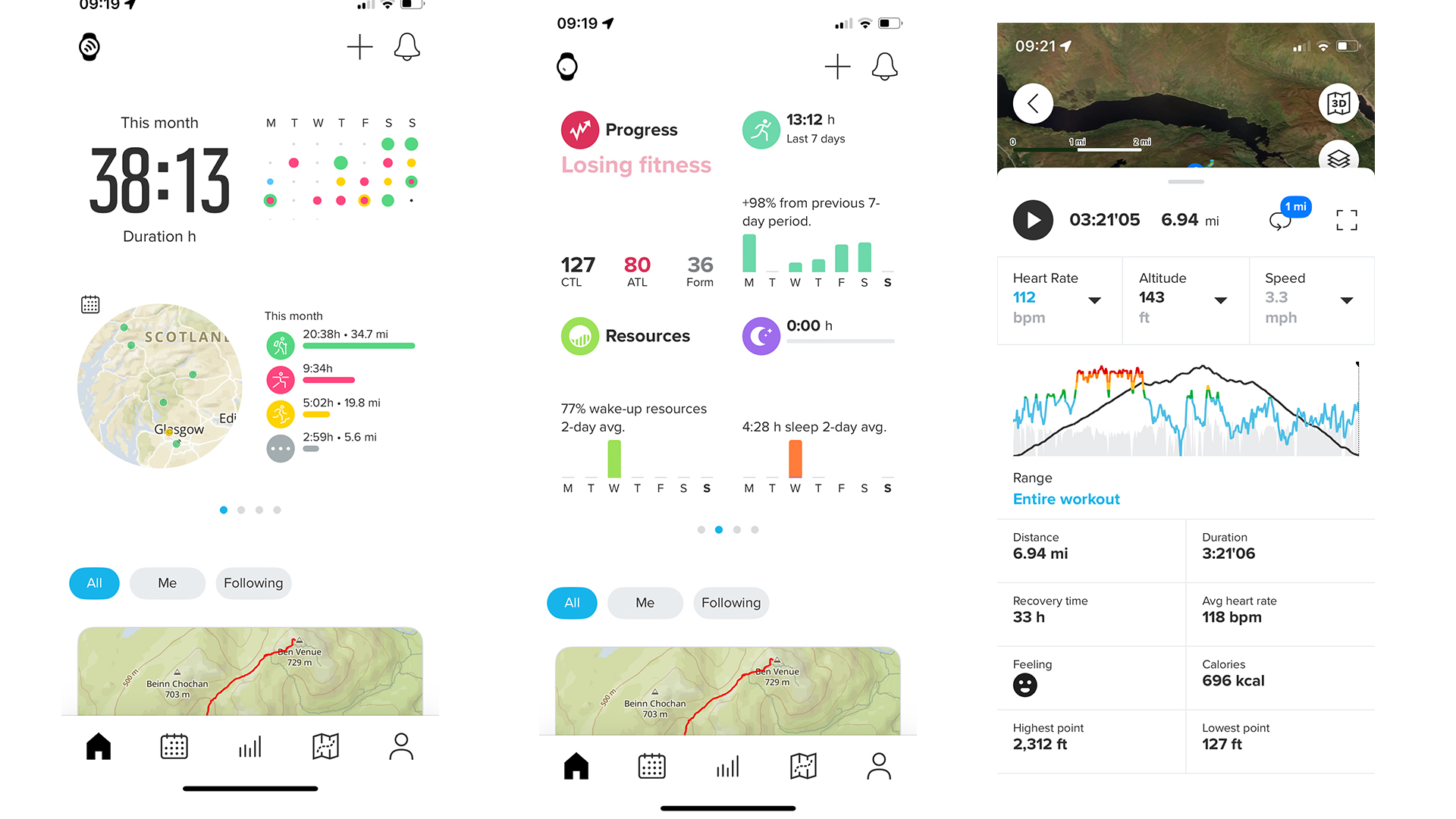
Performance
As I've mentioned, I found the operation of this watch a little confusing at first, often seeming to find myself in the same menu almost no matter what button I pressed or which way I swiped, and this never totally went away even with practice.
However, once I found the activity I wanted to do and set out on the trail, I found the watch intuitive to use. It's simple to get started and the information that displays on the screen when I'm on the trail is clear. It's also very responsive, whether I'm lifting my wrist to check in, pressing buttons, or using the touchscreen.
I've already mentioned the issues I had getting proper maps, but there is one more piece to the puzzle: the first time I was certain I'd managed to get a map on my watch, I was surprised once I started hiking that I couldn't see it. Several times I went into the Hike mode, scrolled down to navigation and selected the map, but when I hit Start, I couldn't see it, and scrolling using the digital crown didn't do anything. I gave up and hiked the old-fashioned way, but when I got home, I realized I needed to press the digital crown to change screens and get to my map, and not try to scroll. It may sound silly to you, but using a scrolling button to scroll through screens seems obvious to me, and it's another slightly unintuitive aspect to this watch.
Something that works brilliantly whether or not I'm following the map is the GPS, which I found to be extremely accurate. When I'm tracing a downloaded route, it gives me a little buzz when a turn is coming up and prepares me to expect it, and likewise it makes it easy to correct when I miss a turn.
I think the battery life is excellent. This watch comes with a little charging cradle and USB cable. I didn't charge it when it arrived, so I didn't start out on a full charge and got four days of use out of it before juicing it up. From then, I got another 11 straight days out of it, during which I had five big days in the hills as well as several smaller workouts.
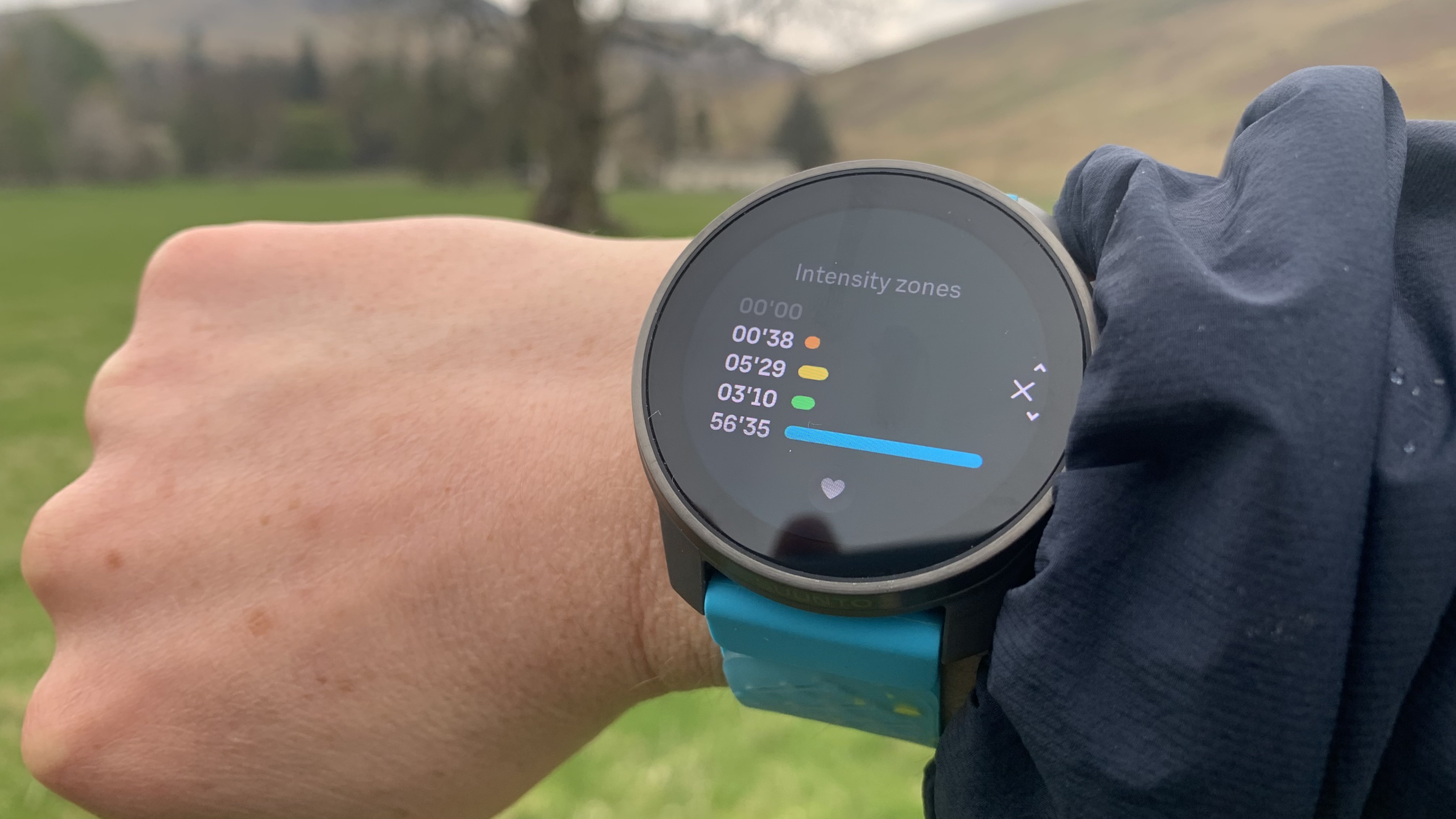
Value
At $349 for the stainless steel bezel and $449 for the titanium model, the Suunto Race S is pricier than a more basic training watch, like the Coros Pace 3, and much cheaper than the Garmin Fenix 7. It's comparable to the Coros Pace Pro and overall, I think it's a better watch.
That's a bargain price for an AMOLED screen and the materials and build are on par with a more expensive watch, plus it doesn't look cheap. If you're seeking a training watch, this one provides you with everything you'd want for a fair price, and as far as I can tell it's only missing smartwatch functions.
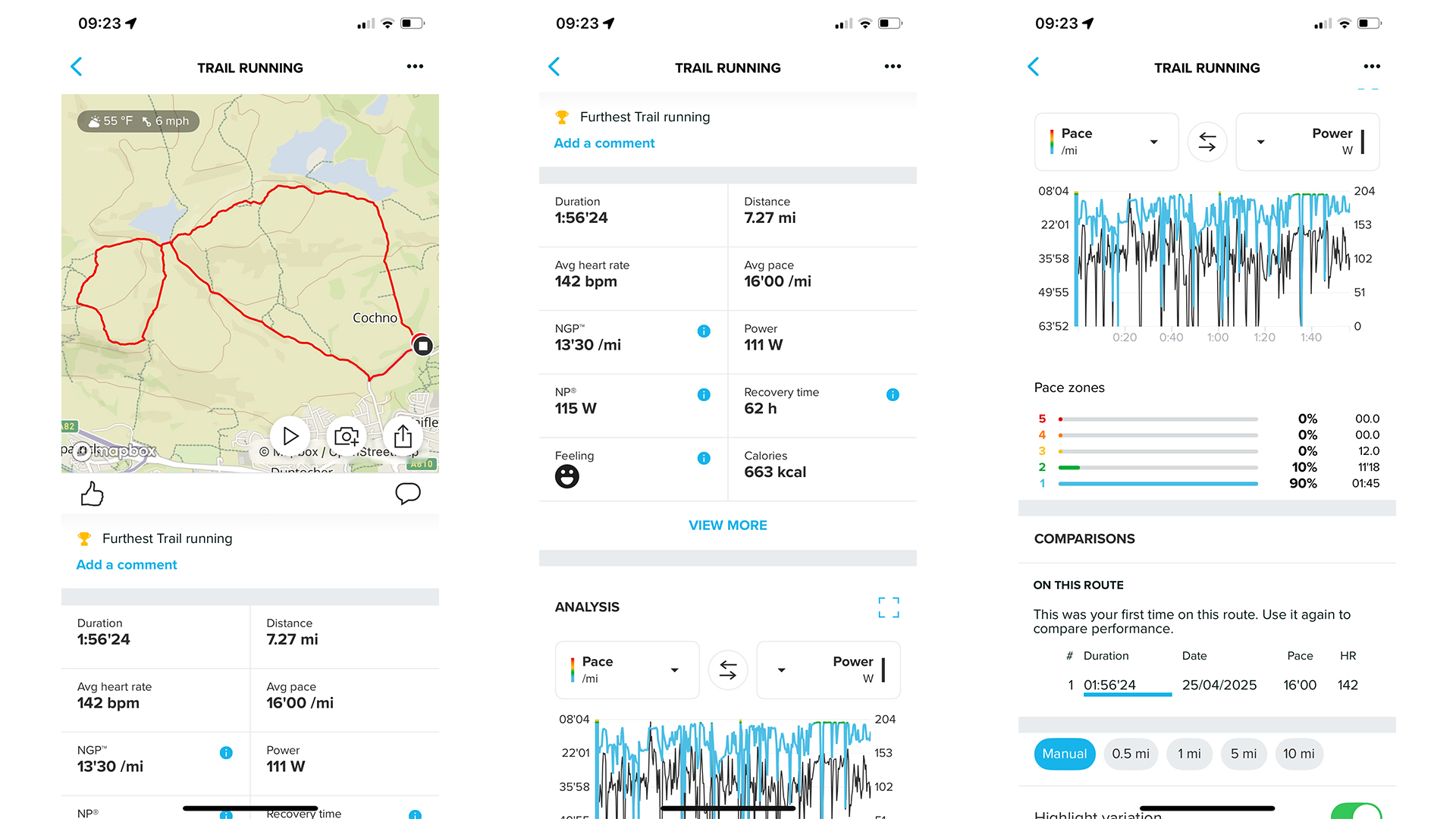
Also consider
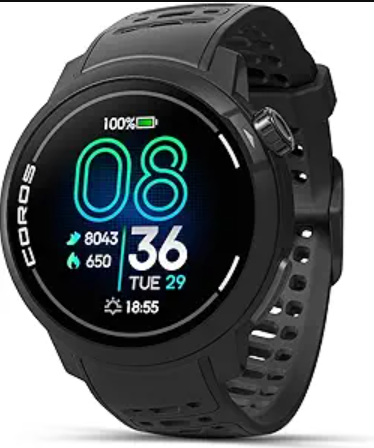
Like the Suunto Race S, the Coros Pace Pro zeroes in on training for athletes and eschews too many smartwatch functions. It's the first from the brand to feature an AMOLED display, which, combined with proper maps and excellent GPS, makes this a solid adventure watch. Both the watch and the Coros app are more intuitive than the Race S, though we did deduct some points for aesthetics and found the heart rate tracking to be somewhat unreliable when the wristband wasn't fastened very tightly.
Read our full Coros Pace Pro review.
Pros
- Bright AMOLED display
- Reliably accurate GPS
- Global topo maps with turn-by-turn navigation
- Easy to use interface
- Responsive touchscreen
- Moderately priced (especially for AMOLED screen)
- Lightweight
- Choice of bands
Cons
- Heart rate monitor can be unreliable with silicone band if strap not tightened
- Button placement means you can accidentally press Start/Stop button during workout
- Only one size available
- Plastic case looks a little cheap
- Mineral glass not as rugged
- Strap is fiddly and uncomfortable
- Limited smartwatch functions
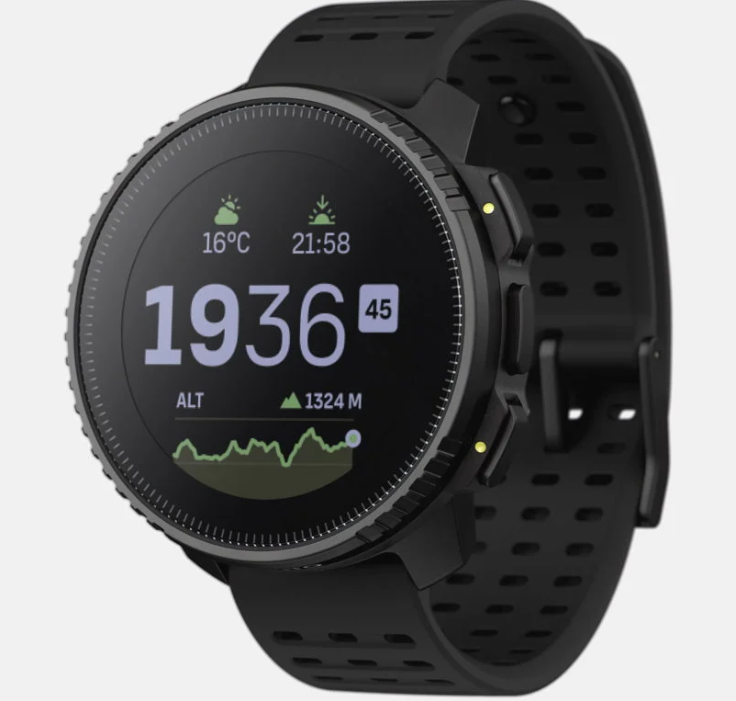
If you're keen on the Suunto brand but want to check out the other models, the Suunto Vertical is built to rival to the Garmin Enduro 2 and Apple Watch Ultra. It's pricier than the Race S and doesn't have an AMOLD display, but this rugged watch has excellent maps, a super long battery life and comes in a solar option for multi-day adventures.
Pros
- Excellent offline maps
- Great in-app route planner
- Super long battery life
- Extra large display
Cons
- Some lag between menu screens
- Stainless steel version lacks solar charging
Comparison table
Watch | Suunto Race S | Coros Pace Pro | Suunto Vertical |
|---|---|---|---|
Price | $349 / £325 (stainless steel), 449 / £425 (titanium) | $349 / £349 | $629 / £545 (stainless steel), $839 / £725 (titanium) |
Weight (smallest) | 1.76oz / 50g (titanium) | 1.7oz / 49g | 3.03oz / 86g (stainless steel) 2.61oz / 74g (titanium) |
Display | AMOLED | AMOLED | MIP |
Sizes available | 1.77in / 45mm | 1.81in / 46mm | 1.93in / 49mm |
Best use | Trail running, hiking, swimming, cycling | Trail running, hiking, swimming, cycling | Trail running, hiking, swimming, cycling, climbing |
Julia Clarke is a staff writer for Advnture.com and the author of the book Restorative Yoga for Beginners. She loves to explore mountains on foot, bike, skis and belay and then recover on the the yoga mat. Julia graduated with a degree in journalism in 2004 and spent eight years working as a radio presenter in Kansas City, Vermont, Boston and New York City before discovering the joys of the Rocky Mountains. She then detoured west to Colorado and enjoyed 11 years teaching yoga in Vail before returning to her hometown of Glasgow, Scotland in 2020 to focus on family and writing.
